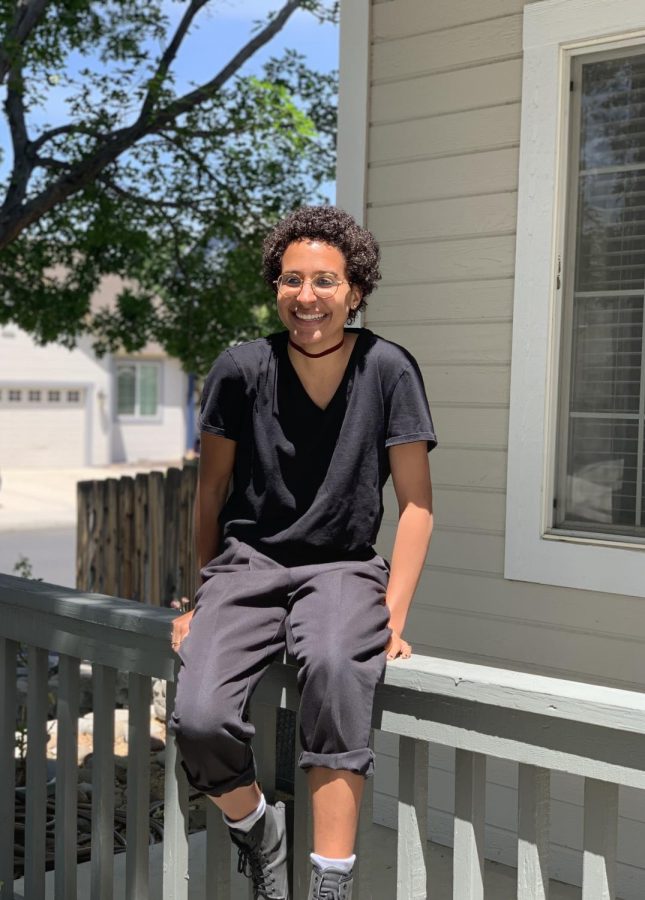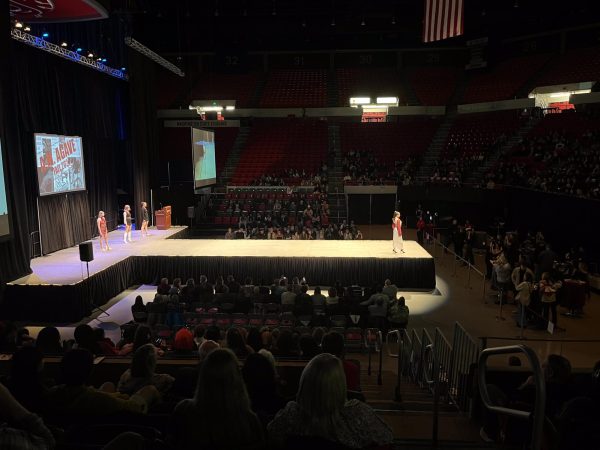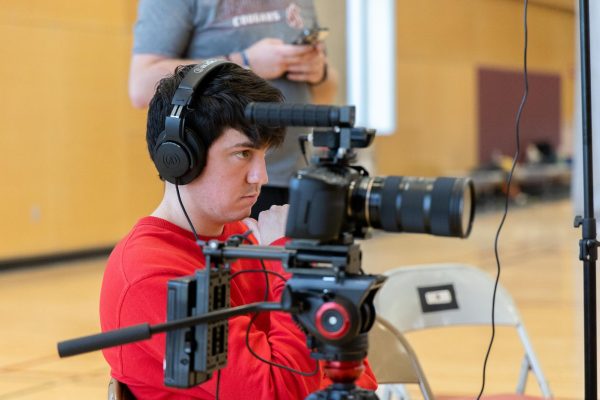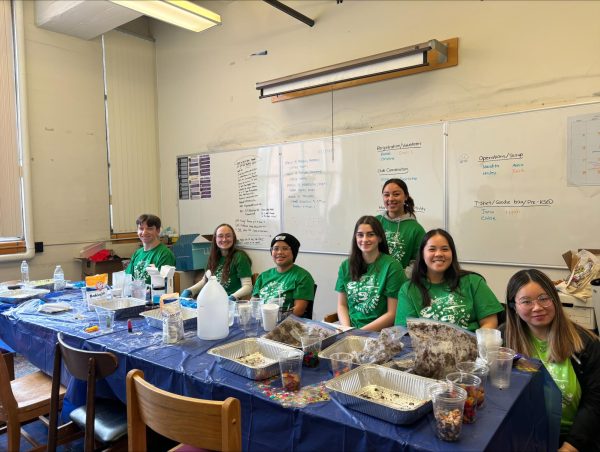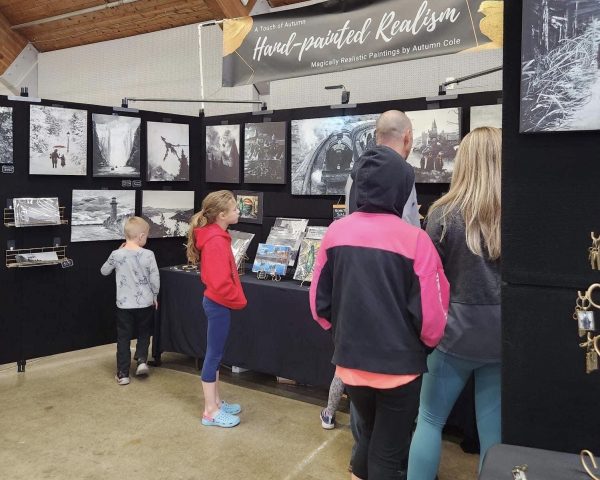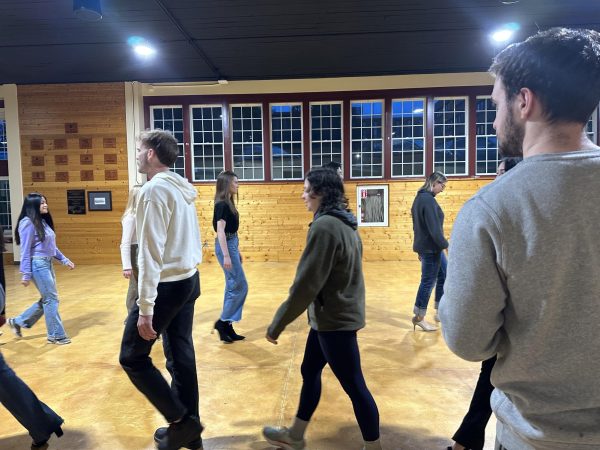WSU student confronts reality of being bisexual, biracial woman
Student talks about microaggressions, allyship, intersection of race, gender sexuality
When Samantha King-Shaw was a freshman on the WSU track and field team, she did not feel accepted as a bisexual and biracial person. However, two years later, she found a place she could be herself in the Queer Intersectional Association and PERIOD.
July 13, 2020
Finding accepting people and an accepting community who acknowledge her as a multifaceted being is something Samantha King-Shaw, a biracial and bisexual woman, has been working on for a while now.
“Once I was introduced to sexuality as a spectrum … That was when it clicked,” said Samantha, senior majoring in women’s gender and sexuality studies with a minor in queer studies.
Looking back, Samantha said she probably had childhood crushes on characters like Violet from The Incredibles, but she did not have the words to explain how or what she was feeling.
As she grew in her hometown of Sparks, Nevada, Samantha said she learned the words “gay” and “lesbian.” She knew she liked boys, so she was not lesbian, but she also liked girls. She said she did not learn the word “bisexual” until she was much older.
“Bisexual,” she said. “It was the first word I latched onto that made sense for me.”
In high school, Samantha did not date girls or boys; she did not date anybody. However, she said she knew people made assumptions about her.
“I was definitely the friend that parents thought their daughter was secretly dating,” she said. “Only in a very stereotypical sense, I wore kind of gender-ambiguous clothing.”
Samantha said she was, and still does, present as a girl, but she would wear a lot of “boy clothes,” mostly in the form of flannel. This led to assumptions.
“‘She dresses like she’s into girls,’” Samantha said. “On one level: sure, they were right. But on the other level: f-ck off, you don’t get to make that assumption.”
Samantha said she continued to think about her gender and sexuality while at WSU.
Sometimes she likes feeling a little fluid in her gender identity, she said especially in regards to gender presentation, which includes the clothes she wears.
“I use ‘she, her’ pronouns, that is an identity that makes sense for me. But gender presentation, the performance of gender, I find more fluidity and ambiguousness,” Samantha said. “It finds me and it feels good sometimes.”
During her first two years at WSU, she thought she could possibly be asexual. This was because she found herself slightly disinterested in sex while living in a sex-saturated culture and had a fear of intimacy.
Samantha said she did not realize how much she internalized biphobia until she found herself in LGBTQ+ spaces.
“I would just identify as queer, not as bisexual,” she said.
Samantha came out to some of her friends and family when she was around 17 years old, during her senior year of high school, she said. This was mostly due to the 2016 election.
“I don’t think I understood how anything worked back then,” she said. “I was really kind of afraid that if I checked any box that wasn’t ‘straight, cisgender,’ then somehow they would be able to find me and take me away, and I was having just a whole breakdown over that.”
Coming out to her parents was a difficult process, so Samantha came out to her father first. She said she has a complicated relationship with him and they did not talk much, so it seemed low-stakes.
“He hugged me and said ‘You can check any box that you feel comfortable with, we won’t let anything happen to you,’” Samantha said.
Coming out to her mother was more difficult. Samantha said she talked around the subject by telling her mother that sexuality was a spectrum, and if it had numbers from zero to 100, then she would be around 90 percent straight.
Samantha said she knew that was not true, that it was more like 65 percent. But she said a higher number because she did not know how her mother would react.
“She didn’t really say anything, she just kind of changed the conversation,” Samantha said. “It wasn’t bad, but it wasn’t good either. I didn’t realize how much I needed to be affirmative and accepted, and the absence of rejection is not acceptance. I didn’t realize that back then.”
Her younger, 18-year-old sister Natalie King-Shaw, said she did not realize how much their mother’s reaction was affecting Samantha. She said this was from a place of privilege because she did not have to go through the process of coming out.
She does not think their mother’s reaction came from a place of non-acceptance, Natalie said. Instead, from the talks she had with her mother at the time, Natalie thinks their mother did not know how to respond.
While they are both very close with their mom, relationships were not something the three usually talk about. Natalie said she assumed her mom’s reaction was on par with the reaction she would have if Natalie had told her that she was interested in a specific boy.
“I didn’t understand the magnitude of what [Samantha] was feeling,” Natalie said, “what she was facing, how important it was that we let her know that she was accepted.”
From the talks they had, Natalie said she realized their mother was worried Samantha would face more hardships in the world being bisexual on top of being a Black woman.
Natalie said they have struggled with their identity as Black women because they are biracial. However, it is especially difficult for Samantha because heteronormativity and homophobia are not uncommon in Black communities.
“People just say such stupid, hateful things and when you’re growing up and hearing that about who you are, not being accepted, that obviously is going to have an impact,” Natalie said.
Coming out to Natalie was completely different. Samantha said she and Natalie are very close and that was who she chose to confide in at an early age.
When they were younger, Natalie said, they would talk about who they thought was cute and for Samantha, girls were always on the list.
“I would just talk about it like, ‘Maybe I want to kiss a girl,’” Samantha said. “[Natalie] said ‘I could see you coming home with a girlfriend.’”
Samantha said she had been close to one of her aunts when she was a child. The relationship changed when she found out her views on the LGBTQ+ community. Samantha has not bothered coming out to her aunt, or much of her extended family.
“It was like ‘Why would I even tell you? Because your vibes are so toxic,’” she said. “Why would I even out myself in that unsafe situation.”
There was an incident where Samantha was in the car with her sister, an aunt and a cousin. The cousin, around nine years old, saw a sign of two men kissing and said it was disgusting and Samantha’s aunt did not say anything.
Samatha said she sat there in the car and noticed her sister did not say anything either. Afterwards, Samantha and Natalie had a fight about the incident.
Natalie said she excused the behavior because her cousin was young, and when she was young, she thought everyone kissing was gross. However, regardless of intention, the comment had hurt Samantha, Natalie said, and she was not doing a good job of listening to Samantha’s feelings.
“The way I’d responded to it did not validate her experience at all,” Natalie said. “There’s nothing worse than having someone try to invalidate what you’re feeling.”
She should not have made excuses for other people or focused on anyone else except Samantha and what she can do to support her, Natalie said.
Samatha said it all occurred when she was beginning to accept her sexuality and be more open about it, so she was feeling less forgiving at the time.
“If I could go back, I would definitely take a harder look at myself and the ways that I am continuing to perpetuate things and let things happen by not acknowledging it because it’s easier,” Natalie said.
Samantha is also a cross country and track and field student-athlete. Being on the team monopolizes a lot of her time, but it is not a very LGBTQ+ friendly space, she said.
“At first I wasn’t out to anyone on my team and I thought that maybe if I was out then they would be better about it,” she said, “but then they weren’t.”
This led to her feeling isolated during her freshman year, she said. Being a queer person of color in that space was difficult for her, and she said she felt like she had no one to turn to.
“I do have friends on the team, some of them have really grown,” she said. “But the space, in general, is not super welcoming to people who are of a certain type of background.”
Oftentimes, Samantha said, she feels like she is fighting to be seen, to have any of her identities recognized.
“I don’t like being the only queer person of color in this space,” she said. “I spent a lot of time speaking up when I heard some nonsense.”
She said she got into a lot of arguments about intersectionality during her freshman year. She found herself avoiding her teammates and isolating herself because she constantly felt burnt out after being baited into even more arguments. However, she has seen a shift in behavior for some.
“Shoutout to some of my teammates who are definitely my friends, who’ve done the work,” she said.
Natalie said she is and has been, worried for Samantha and her safety, but she has always been supportive of Samantha finding her voice.
“No matter what we do as Black people, you’re never going to be safe. She could be at the grocery store, she could be driving and she’s never going to be safe,” Natalie said. “I don’t think that that should ever stop her from using her voice because things are never going to change if we’re not being loud.”
In her sophomore year, Samantha joined the Queer Intersectional Association, formally known as Queer People of Color and Allies, and she has been involved in it ever since.
“That was a really, if not life-saving, then definitely a soul-saving place that I found and I’m really, really grateful,” Samantha said.
Along with the classes she takes for her major and minor, she said being a part of QIA and PERIOD, which focuses on decoupling gender from menstruation, has taught her a lot.
One of the things she learned was it is not her job to educate others. People who want to be allies need to step up and have conversations about allyship, she said.
“It’s not actually the job of marginalized people to educate their oppressors on their oppression,” she said. “You don’t get a cookie for being an ally.”
Natalie said seeing every part of a person is important to love them and this, of course, extends to her sister.
“If you don’t see that about a person then you don’t see them. That’s part of who she is and I love every part of who she is,” Natalie said. “I want her to be the best version of who she can be and as much of her that she can be.”
Samantha said she hates the idea and possibility that her friends and family only learned about LGBTQ+ communities, and also race in the case of her teammates, because of their relationships with her.
“I don’t want you to care about LGBTQ+ stuff because I’m bisexual,” she said. “I want you to care because it’s the right thing to do. I don’t want … your investment in allyship … to be dependent upon that one person. Pretend I’m not here, pretend I don’t exist, what does the picture look like?”


